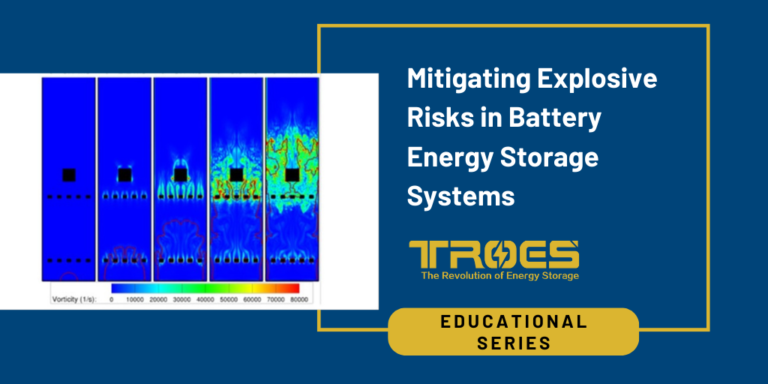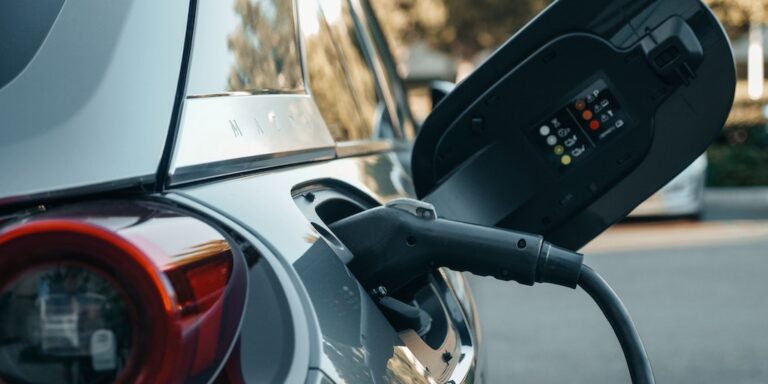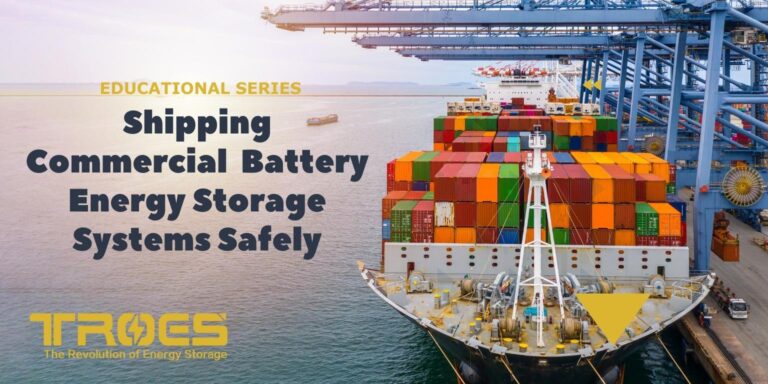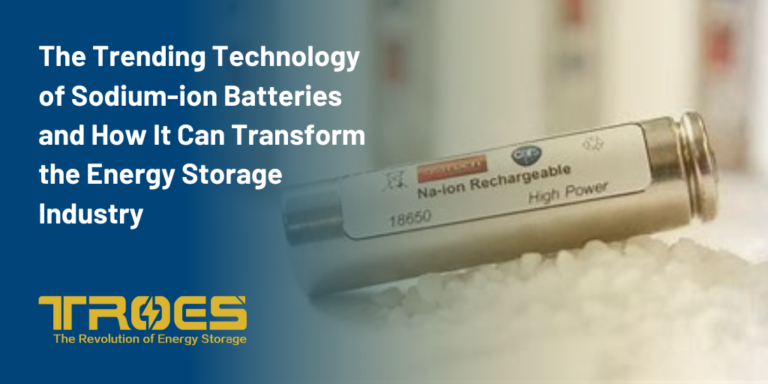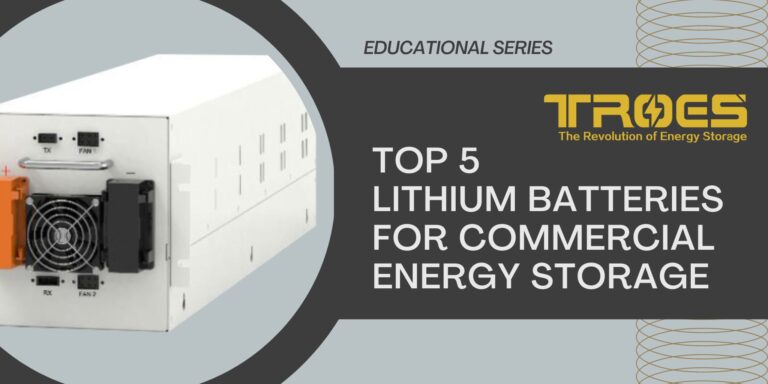Beyond Solar: The Complexities of Integrating Battery Energy Storage
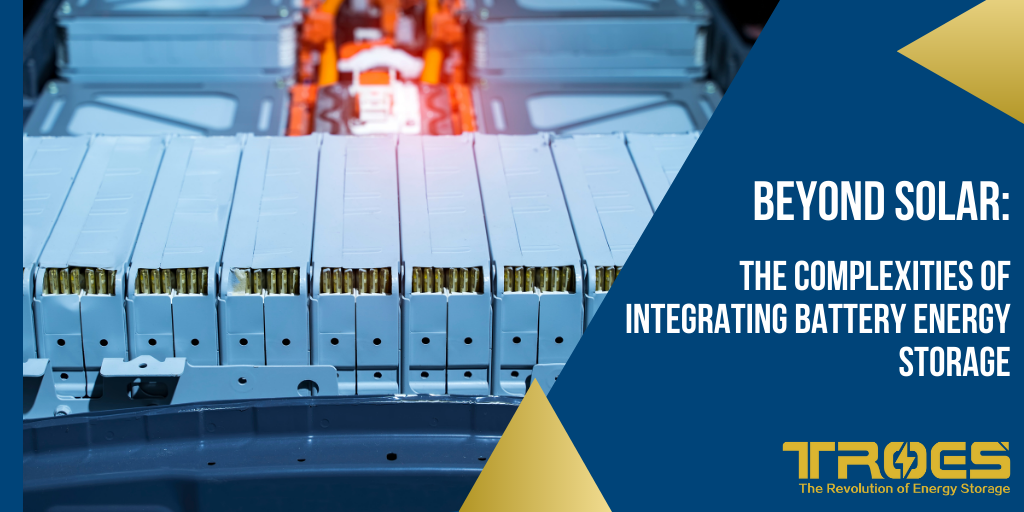
Battery energy storage is a rapidly evolving technology with a complex supply chain, making it a prosperous while challenging environment.
Unlike solar, battery energy storage systems (BESS) involve a myriad of complex technologies, including electrical and electronics engineering, mechanical engineering, fire protection engineering, battery management software, sensor integration, local control and cloud-based monitoring and controls. Self-integration of these technologies can be challenging, requiring experienced technology solution providers who continually improve their processes to ensure long-term success, safety, and market adoption in various applications.
As early as 2018, TROES became one of the initial companies to recommend the use of lithium iron phosphate (LFP) batteries in stationary energy storage systems after its first version of LFP based battery packs passed UL1973 certification. Since then, TROES has expanded its offerings to include the integration of software and control systems into its overall battery energy storage systems, leveraging its expertise and competitive advantages.
To begin the integration process, TROES starts by carefully selecting the appropriate battery chemistry and cell. Amongst the numerous requests received by TROES, LFP batteries currently meet over 80% of commercial and industrial project requirements due to their exceptional safety, extended cycle life, and cost-effectiveness. In comparison to NMC batteries, LFP batteries are considered much safer, making them an ideal choice for BESS. However, for certain projects that require higher C rate, or need to be stored in extremely low temperature conditions, TROES recommends lithium-titanate (LTO) batteries as the key integration chemistry. TROES is also open to considering other battery chemistries for special commercial & industrial (C&I) applications.
Secondly, integrating an energy storage system involves connecting the DC side (battery) to the AC side (load and/or grid) while ensuring the necessary voltage and capacity are provided without oversized capacity. This requires expertise in both the electrical and mechanical aspects of the system.
Thirdly, energy storage is a bi-directional process, acting as both a load during charging and a generator during discharging. This adds to the complexity of the system, especially when it is used in conjunction with other generation resources like solar or wind. The energy storage system can operate in either grid-forming mode or following mode depending on the specific application requirements. Grid-forming mode is suitable for microgrids or off-grid systems, while grid following mode is suitable for grid-connected systems.

The next step in designing the system is selecting the right power electronics to convert the DC power from the battery to AC power. This involves selecting an inverter and other power electronics components that can handle the power levels required by the load and/or grid. The choice of inverter type, such as pulse-width modulation (PWM) or sinusoidal pulse-width modulation (SPWM), as well as its power rating and efficiency levels, are important considerations.
Additionally, grid-connected power electronics systems must comply with specific standards and regulations to ensure safety, reliability, and quality of service. These standards may include requirements for power quality, islanding protection, anti-islanding protection, and fault ride-through.
Furthermore, the integration of an energy storage system involves designing the necessary controls and communication protocols to manage the battery cells and ensure that the system operates safely and efficiently. This requires selecting the right control systems and communication protocols that can manage the state of charge and health of the battery cells. Some power converter systems (PCS) can communicate directly with the battery management system (BMS), while others require an intermediate control system to manage the risks.
If the PCS has direct access to the BMS, it could potentially override or bypass some of the BMS’s safety protocols, which could lead to unsafe or unreliable operation. For example, suppose that the BMS is responsible for monitoring the battery’s temperature and state of charge, having set upper and lower limits for these parameters to prevent unsafe operation. If the PCS has direct access to the BMS, it could potentially override these limits and force the battery to operate outside of the safe range, either intentionally or unintentionally.
Lastly, the system must be tested and commissioned to ensure that it operates safely and efficiently. This involves performing various tests and checks to ensure that the system is functioning as intended and that it meets all safety and performance standards.
In conclusion, self-integrating an energy storage system can be a challenging task because it involves several technical considerations related to the DC-AC integration. To ensure a successful integration, it is important to have a deep understanding of both the electrical and mechanical aspects of the system, as well as the necessary controls and communication protocols to manage the system safely and efficiently. Failure to properly consider these technical considerations can result in reduced system efficiency, reduced battery life, equipment damage, safety hazards, and even system failure.

